|
Originally written for ATV Magazine on December 17, 2009 by Jon Rhodig 3 Wheelers, they were weird looking and handled oddly. With ATV Magazine doing a 10 part look back at the decade of ATVing (2009 ed), I thought I would bring back some memories of my youth as it relates to my entry into offroading. The 3 wheeler. First off the 3 wheeler, later dubbed the ATC (by Honda) standing for All Terrain Cycle, is an inherently poor design choice for a motorized vehicle. A tripod is very stable standing still, but when an opposing force is applied it becomes very unstable. This definition applies to the single wheel being in the front, single rear wheel machines have more stability. This quote from “Super Hunky” Rick Sieman’s Ten Worst Dirt Bikes of All Time sums it up with the ATC or 3 wheeler coming in at number 2 on his list. “2. ANY THREE-WHEELER. Yup, the All- Terrain Cycle, or ATC, was introduced by Honda to let people who didn’t have the skills to balance a regular two-wheeled bike ride in the dirt. Cute little buggers, the ATCs sold like crazy. Then savvy people started noticing that they handled like a shopping cart loaded with bowling balls with one locked front wheel going down a flight of stairs. People started doing wonderful things like riding over their own legs and biffing over the bars when the things got into a high- speed wobble-you know, anything over 20 mph. Suspension on these early three-wheelers? Nothing. Zip. Nada. Zero. Just three balloon tires were there to take the impacts. As the years passed, the ATVs got more and more powerful and they gave them forks and shocks. This let the unstable triangle wallow around, as well as defy the laws of physics when trying to turn. The rest is history. Three-wheelers are no longer being made. However, be warned! They’re still out there, wiggling and lurching around the trails and sandpits of America.” Alright so the 3 wheeler may not be the optimal design choice for the way an ATV is used today, but it all had to start some where. The 4 wheeled ATV would not make it's appearance until 1983 with the Suzuki LT125D. 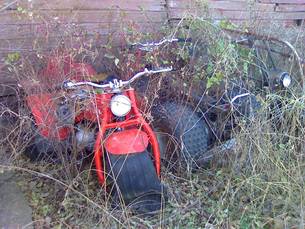 Unfortunately this is how mine sit today (2009) Unfortunately this is how mine sit today (2009) This article is about the two 3 wheelers I grew up with before I found my love of 2 wheeled motorcycles. I will introduce each 3 wheeler and give an opinion of its performance at the time they were new. Ideally I would like to ride them again to have a back to back comparison just like the magazines do with current machines. Sadly even though I still have the machines in my collection they are in badly need of a restoration, so my opinion on the performance will be one of my recollection all those years ago. 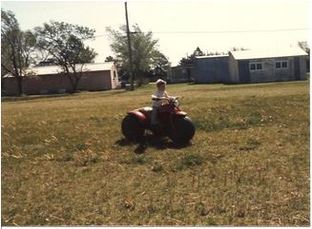 Me age 3, things were safer then Me age 3, things were safer then 1970 Honda ATC/US90 First up the probably the most recognized of the 3 wheelers ever made. The US90 (or later known as the ATC90) from Honda. This little machine features a pull start horizontal type 90cc engine with a semi auto 4 speed with a hi/low range transmission. A variation on the CT90. A stamped steel 2 piece backbone type frame (similar in nature to the CT90/70 of the same vintage). Large 22 inch rimless balloon style tires with a tractor style tread pattern. Single rear drum brake operated by a foot peddle or hand lever. Throttle was a thumb type (never before seen at this point). Ignition is a 6V breaker point type with battery for a head light and tail/brake light. Power out put is around 7 HP through a chain drive to the rear axle. Also there is no suspension whatsoever. About 3 psi of air in the tires is the suspension. 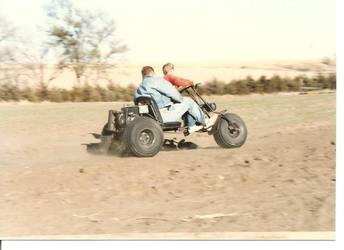 Things were a lot safer back then, trust me Things were a lot safer back then, trust me Early 70's Montgomery Ward Terrain Cycle. This is definitely a less memorable (or forgettable) machine from ATVing’s past. For a little clarification on machines of this type, distribution companies like Sears and Roebuck, Service Merchandise, J C Penny Co. ect... all tried to get on the 3 wheeler and mini bike band wagon of the late 60′s and early 70′s introducing models like this for purchase through their catalog stores. Yeah before the internet you either bought things mail order out of a published catalog or when to the store that was also the warehouse. The machines were built by 3 party metal fab job shops (in the U.S.) for sale through these companies. The Terrain Cycle featured a traditional pull start vertical (horizontal shaft) Briggs & Stratton (or Tecumseh engine) 10HP engine, Comet variable speed CVT style belt drive primary (think early snowmobile drive) with a jack shaft to a chain final drive to a split (break-away) axle. The frame was a welded tubular steel frame. The seating position was more like a car and your feet were held in stirrups of sorts stretched out in front. Brakes were a band type around a drum (unlike an expanding shoe/drum brake) there two rear only, one for each wheel and separate hand controls. Tires are a 22 inch square knobbies. Throttle is a twist type. It featured a headlight and tail light powered by the ignition system. Suspension was no where to be found as well. 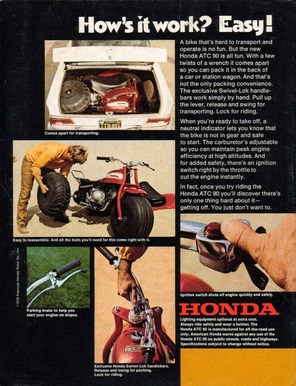 Just fold up the Honda ATC and go! Just fold up the Honda ATC and go! Both machines were designed with the ability to some what be easily disassembled for transport in the back of a station wagon or large car (of the 70′s variety). Before I conduct this little comparison between the two machines it might be wise to set the stage of this comparison. Pretend its the early 70′s, an ATV is un heard of, motorcycles are primarily used as transportation/utilitarian purposes, and the lines between offroad and street models are blurred, most are dual sports or purely street bikes. Also most households had only one maybe two vehicles, and of those vehicles they generally were NOT pickups. Pickups were typically only owned by people who worked in trades, not the average suburbanite. Disposable income was not as available for “purpose” or non street legal built machines thus why most Japanese dirt bikes were dual purpose as most Americans could not afford a bike that had to be hauled to the trail. Basically motorized vehicles purely for recreation were not a large segment of the market yet. 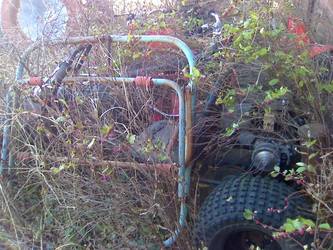 Archaic with it's steel tubular design but affordable Archaic with it's steel tubular design but affordable Lets compare what each had to offer the consumer at the time Performance: As far as all out performance is concerned, the Terrain cycle wins by default by sheer horsepower. The engine makes a few more ponies over the Honda helps, but the real value add is the fact that the CVT primary and chain final drive is virtually infinitely adjustable. The Honda’s transmission, while conventional by today's standards, is a bit rigid and the final drive gearing is not easy to change. Also Honda’s semi-auto transmission would baffle novices with its constant need for clutch adjustments overtime as well as the 2 speed hi/lo shifting in which the machine needed to be stationary (stopped) to switch between the 2 ranges. The Terrain cycle on the other hand was purely start and go. Savvy people could also switch out the various springs in the CVT pulleys to change how the power was delivered to the rear wheels. Top speed was also in the favor of the Terrain cycle over the Honda. The Honda probably topped out at around 30-35 mph where as the Terrain cycle in stock form probably could do about 40-45 and with gearing changes could probably get into the 50′s. Although for pure grunt the Honda wins hands down with its super low range it would allow that little 7HP engine pull twice its weight. The Terrain cycle was not a torque monster mostly because of the CVT drive when it comes to utilitarian purposes. The Honda had a small hitch for towing a small lawn cart for utility. Handling: In the category of handling there is not much to say. They both handle pretty odd to say the least. The advantage in handling would narrowly go to the Terrain cycle but only because of the split axle, the ability to have a rudimentary differential to aid in turning (keeping the front end from plowing while turning) also the use of the individual wheel brakes makes for even more control, albeit a bit cumbersome. The Honda features a solid rear axle so the front end pushes slightly more, especially at low speeds. Ride is going to be a bouncy, teeth rattling affair with only the low air pressure in the tires to absorb impacts. On the flip side, the low air pressure in both machines allow great flotation in soft (sand, mud, snow) terrain which where both of these machines primarily designed for recreation. Otherwise the handling is very similar with neither being spectacular. 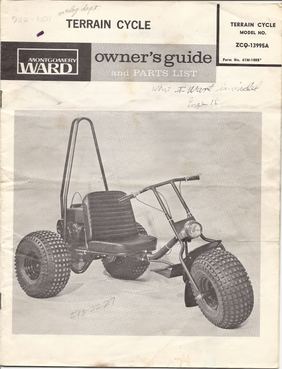 Some assembly required Some assembly required Build quality: In this category the Honda gets the advantage for the simple fact of aesthetics and previous track record with their small motorcycles. However both machines would have looked like they belong on the moon aided by the fact that the space race was still in the public consciousness. The Honda pulls off the legitimacy of a quality machine because of the use of (fragile) fiberglass fenders/bodywork and well thought out design. The Terrain cycle is largely like a go cart you build from a kit, as a matter of fact some parts are found on go-carts of the day. The frame and drive line are plenty strong but lack the visual appeal with no bodywork or aesthetics. Although at the time some people might have questioned the strength of a thin stamped steel frame used on the Honda versus the “known” strength of welded tubular steel. As we know today that fact that the stamped steel frame would turn out to be plenty strong even if it looks a bit odd. Weight wise the terrain cycle tips the scales at a dismal 150 lbs while the ATC90 weighs in at a porky 228 lbs. It does carry its weight well though. All in all both machines were built well for the intended purpose. Honda wins this catagory for being the most utilitarian form and function. Price: Hands down the Terrain cycle wins here with a price of around $300 (approx. $1,663.00 in 2008) vs. $595 (approx. $3,298.28 in 2008) of the Honda ATC90. Although considering Honda is in the business of selling motorcycles and ATC’s there is a lot of R&D dollars to recoup, where as Montgomery Ward’s Terrain Cycle is just another product marketed similarly to that of other sporting goods, like tennis rackets, bicycles, lawn and garden equipment in a catalog. Honda has a very targeted market so the price is pretty competitive if you think about it. If a novice rider didn't learn on an Honda 50 they probably tried riding one of these. Conclusion: It may seem like the odd, hardly remembered, short lived Montgomery Ward Terrain cycle (and others like it) should have been a huge success and get credit for jump starting ATVing with it's low cost of entry. Ultimately the Honda is the birth of the ATC (3 wheeled ATV) with Suzuki birthing the 4 wheeled ATV. Its a clear case of proper marketing and product development. The Terrain cycle was purely a disposable toy where as the Honda put some utilitarian function into the packaging of a similar toy. The big question is “Which machine would I have chosen if I was back in 1970?” I think my choice would depend on my circumstances. If I was from suburbia looking to sample off road recreation I would have chosen the Terrain cycle, and upgrade machines in the future. Although being I grew up in the heartland as a farmer the Honda would have been my choice, even if it would have been quite a drive to a dealer to purchase and get parts for at the time as the dealer network was not extensive (remember this is BI, Before Internet) unless you lived on one of the coasts. Want to learn more about the history of ATVs? Here is a list highlighting some notable models throughout history
Comments
|
Details
AuthorJon "the junk man" helping to promote responsible riding and recreation whether it be at the track or at the trail. Your source for motorcycle how to videos and much more! Archives
February 2023
|
Proudly powered by Weebly

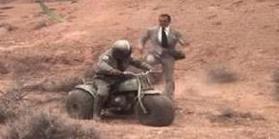
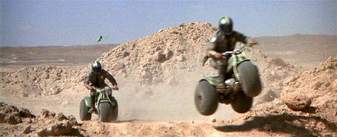



 RSS Feed
RSS Feed
